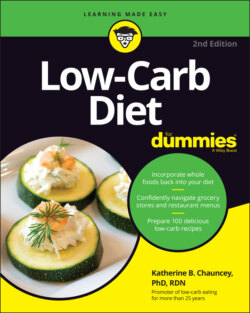Читать книгу Low-Carb Diet For Dummies - Katherine B. Chauncey - Страница 97
Spotting early problems with blood pressure
ОглавлениеBlood-pressure readings are expressed in two numbers that reflect the pressure on artery walls when the heart contracts. Turn to Table 4-3 for information on what your blood pressure reading means.
TABLE 4-3 Blood Pressure Reading
| Blood Pressure Classification | Systolic (Top Number) | Diastolic (Bottom Number) | |
|---|---|---|---|
| Normal | Less than 120 | and | Less than 80 |
| Elevated | 120 to 129 | and | Less than 80 |
| High Blood Pressure (Hypertension) Stage 1 | 130 to 139 | or | 80 to 89 |
| High Blood Pressure (Hypertension) Stage 2 | 140 or higher | or | 90 or higher |
| Hypertensive Crisis (consult your doctor immediately) | Higher Than 180 | and/or | Higher than 120 |
New guidelines for blood pressure readings were issued by the American Heart Association, the American College of Cardiology, and nine other health organizations in 2017. These new guidelines lowered the thresholds for blood pressure readings. Health officials recognize a category for blood pressure called elevated. If the top (or systolic) number in your blood pressure reading is between 120 and 129 and if the bottom (or diastolic) number is less than 80, you have elevated blood pressure. Elevated is a blood pressure that doesn’t require treatment with medication but still can increase your risk of heart disease and stroke. These guidelines along with medication when indicated encourage you to make lifestyle changes such as losing weight, exercising, quitting smoking, or reducing alcohol intake. A dietary approach known as Dietary Approaches to Stop Hypertension (DASH) and the Mediterranean Diet have been shown to reduce blood pressure. The low-carb Whole Foods Weight Loss Eating Plan described in this book incorporates the principles of the DASH Diet and the Mediterranean Diet.
